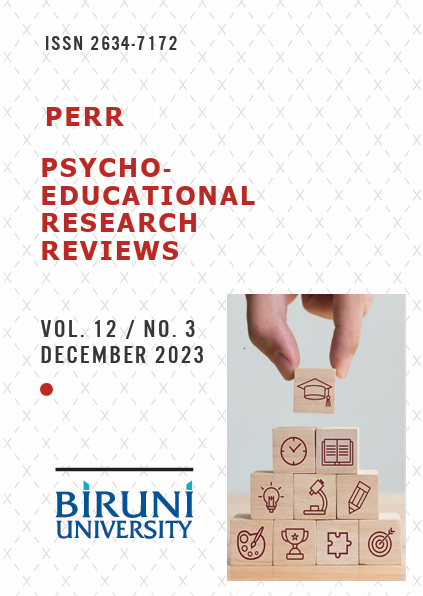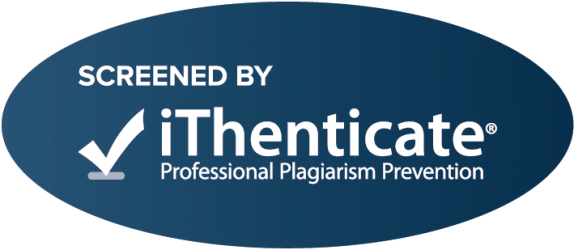Lonileness, Internet Addiction, and Mental Health Among Adolescents: A Mediation Model
DOI:
https://doi.org/10.52963/PERR_Biruni_V12.N3.01Keywords:
Loneliness, Mental Health, Internet addiction, Mediation Model, AdolescentsAbstract
The aim of this research was to investigate the mediating role of loneliness between Internet addiction and Mental Health among adolescents. This cross-sectional study was conducted with feedback from self-reported questionnaires completed by adolescents. Adolescents are students in secondary school in Sadat City. Convenience sampling, which is a non-random sampling method, was used as the sampling method in the study. Within the scope of the study, the scale forms were applied to 440 adolescents. 20 forms were excluded from the study as a result of irregularly filled and extreme values that emerged as a result of the calculation. In total, analyzes were made on 420 data. As indicated by the findings, there are positive and significant relationships between loneliness and Internet addiction. While there is a negative significant relationship with Mental Health. This study highlights the Importance of investigating the mediating role of loneliness between internet addiction and mental health among adolescents.
Downloads
References
Ali, A. M., Hendawy, A. O., Almarwani, A. M., Alzahrani, N., Ibrahim, N., Alkhamees, A. A., & Kunugi, H. (2021). The six-item version of the internet addiction test: Its development, psychometric properties, and measurement invariance among women with eating disorders and healthy school and university students. International Journal of Environmental Research and Public Health, 18(23), 12341. https://doi.org/10.3390/ijerph182312341
AlKhawaja, A. (2017). The effectiveness of rational emotive behavioral therapy in reducing the level of Internet addiction and improving the general competence of students at Sultan Qaboos University. Journal of Al-Quds Open University for Open Research and Studies, 17, 227-240.
Alkhawaja, A. (2020) Internet addiction & loneliness among tenth grades students in Al- Sharqiya North at Sultanate of Oman. Journal of Educational and Psychological Sciences, 36(4), 46 – 60.
Bakioğlu, F. (2020) Internet Addiction and Social Self-Efficacy: The Mediator Role of Loneliness. Anales de Psicologia, 36(3), 435-442. http://dx.doi.org/10.6018/analesps.36.3.394031
Beneito-Montagut, R., Cassián-Yde, N., & Begueria, A. (2018). What do we know about the relationship between internet-mediated interaction and social isolation and loneliness in later life?. Quality in Ageing and Older Adults, 19(1), 14-30. https://doi.org/10.1108/QAOA-03-2017-0008
Cacioppo, J. T., Fowler, J. H. and Christakis, N. A., (2009). Alone in a crowd: The structure and spread of loneliness in a large social network. Journal of Personality and Social Psychology, 97, 977-991. https://doi.org/10.1037/a0016076
Chen, P., Zhou, L., &Luo, I. Jun (2007). A study on the psychological health of Internet addiction disorder of college students. Chinese, Journal of Clinical Psychology, 15(1), 40-41.
Ditommaso E, Brannen C, Best LA. (2004). Measurement and validity characteristics of the short version of the social and emotional loneliness scale for adults. Educational and Psychological Measurement, 64(1), 99–119. https://doi.org/10.1177/001316440325
Gu, J., Wu, P., Luo, Y., He, X., Fu, L., Liu, H., Lin, F., Xu. Q., & Wu, X. (2023). Internet addiction, loneliness, and academic burnout among Chinese college students: A mediation model. Front Psychiatry, 14, https://doi.org/10.3389/fpsyt.2023.1176596
Gunay, O., Ozturk, A., Arslantas, E. E., & Sevinc, N. (2018). Internet ad-diction and depression levels in Erciyes University students. Düşünen Adam Journal of Psychiatry & Neurological Sciences, 31(1), 79-88. https://dx.doi.org/10.5350/DAJPN2018310108
Hasmujaj, E. (2016). Internet addiction and loneliness among students of University of Shkodra. European Scientific Journal, ESJ, 12(29), 397. https://doi.org/10.19044/esj.2016.v12n29p397
Heinrich, L.M., & Gullone, E. (2006). The clinical significance of loneliness: A literature review. Clinical Psychology Review, 26(6), 695- 718.
Hoyt, L. T., Chase-Lansdale, P. L., McDade, T. W., & Adam, E. K. (2012). Positive youth, healthy adults: Does positive well-being in adolescence predict better perceived health and fewer risky health behaviors in young adulthood?. Journal of Adolescent Health, 50(1), 66-73.
Kaur, S. (2018). Gender differences and relationship between internet ad-diction and perceived social self-efficacy among adolescents. Indian Journal of Health & Wellbeing, 9(1), 106-109.
Koç, H., & Arslan, C. (2022). The mediating role of loneliness in the relationship between maladaptive thinking styles and emotional expressivity. Psycho-Educational Research Reviews, 11(1), 93–107. https://doi.org/10.52963/PERR_Biruni_V11.N1.07
Russell, D. (1996). UCLA Loneliness Scale (Version 3): Reliability, validity, and factor structure. Journal of Personality Assessment, 66, 20-40.
Salimi, A., Jokar, B., & Nikpour, R. (2009). Internet communication in life: The role of perceived social support & loneliness in the use of the Internet. Psychological studies, 5(3), 81- 102.
Stoeckli, G. (2010). The role of individual & social factors in classroom loneliness. The Journal of Educational Research, 103, 28- 39.
Valenti, G.D., Craparo, G. & Faraci, P. (2023). The Development of a Short Version of the Internet Addiction Test: The IAT-7. Int J Ment Health Addiction. https://doi.org/10.1007/s11469-023-01153-4
Waters, L. (2011). A review of school-based positive psychology interventions. Australian Educational and Developmental Psychologist, 28, 75-90.
Whitty, M.T., & McLaughlin, D. (2007). Online recreation: The relationship between loneliness, Internet self- efficacy and the use of the Internet for entertainment purposes. Computers in Human Behavior, 23(3), 1435–1446. https://doi.org/10.1016/j.chb.2005.05.003
Additional Files
Published
How to Cite
Issue
Section
License
Copyright (c) 2023 Psycho-Educational Research Reviews

This work is licensed under a Creative Commons Attribution-NonCommercial-NoDerivatives 4.0 International License.










